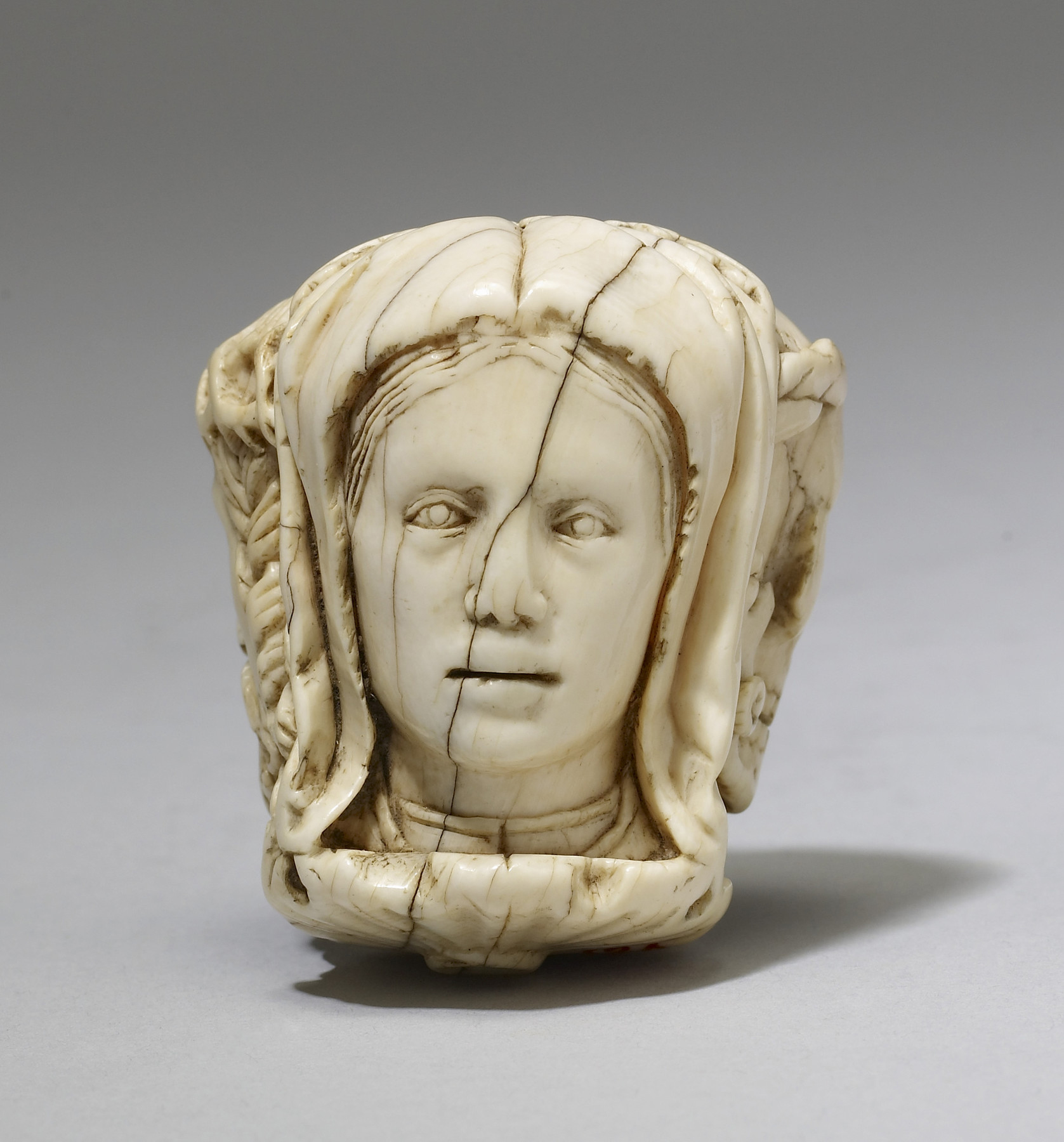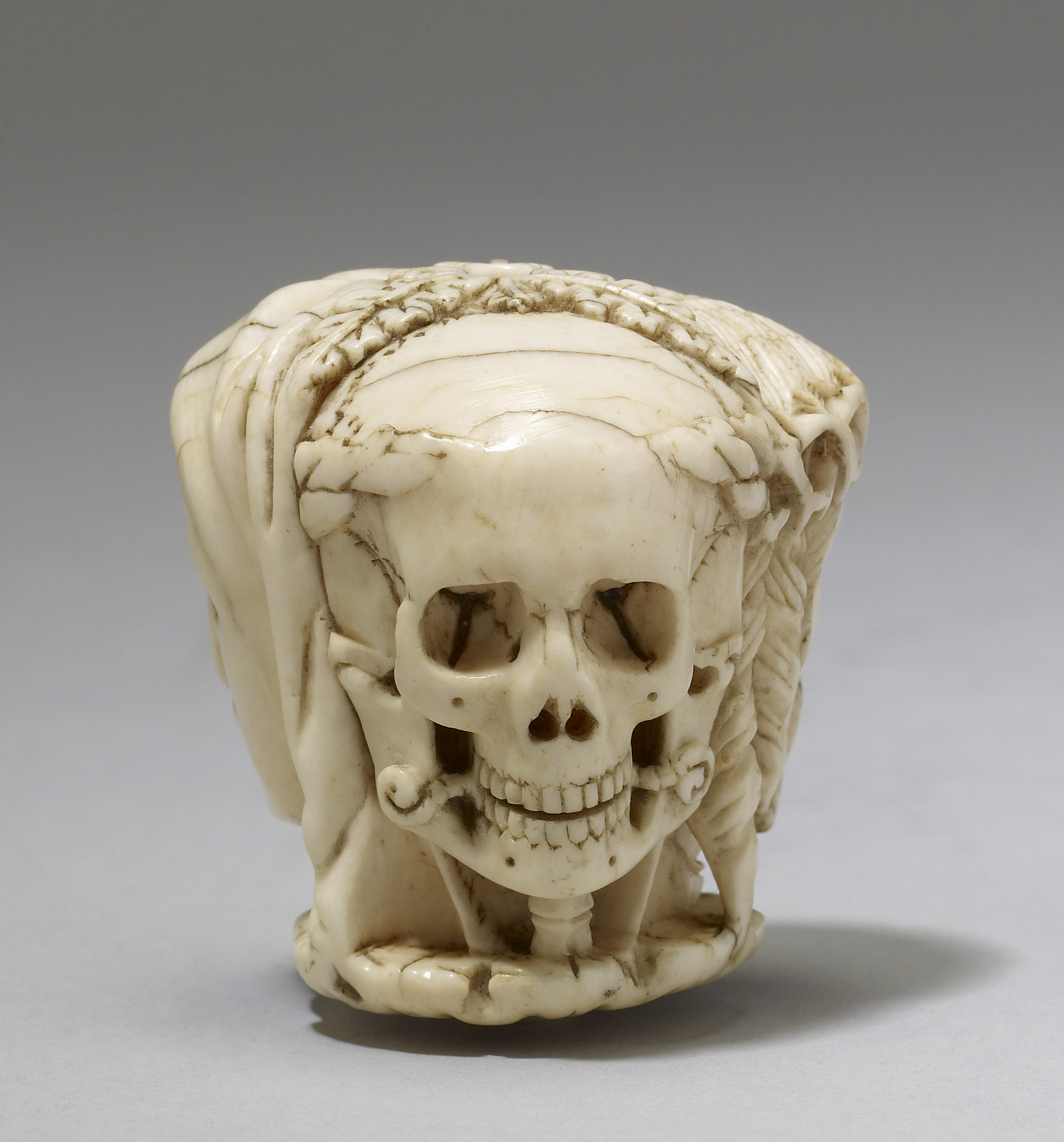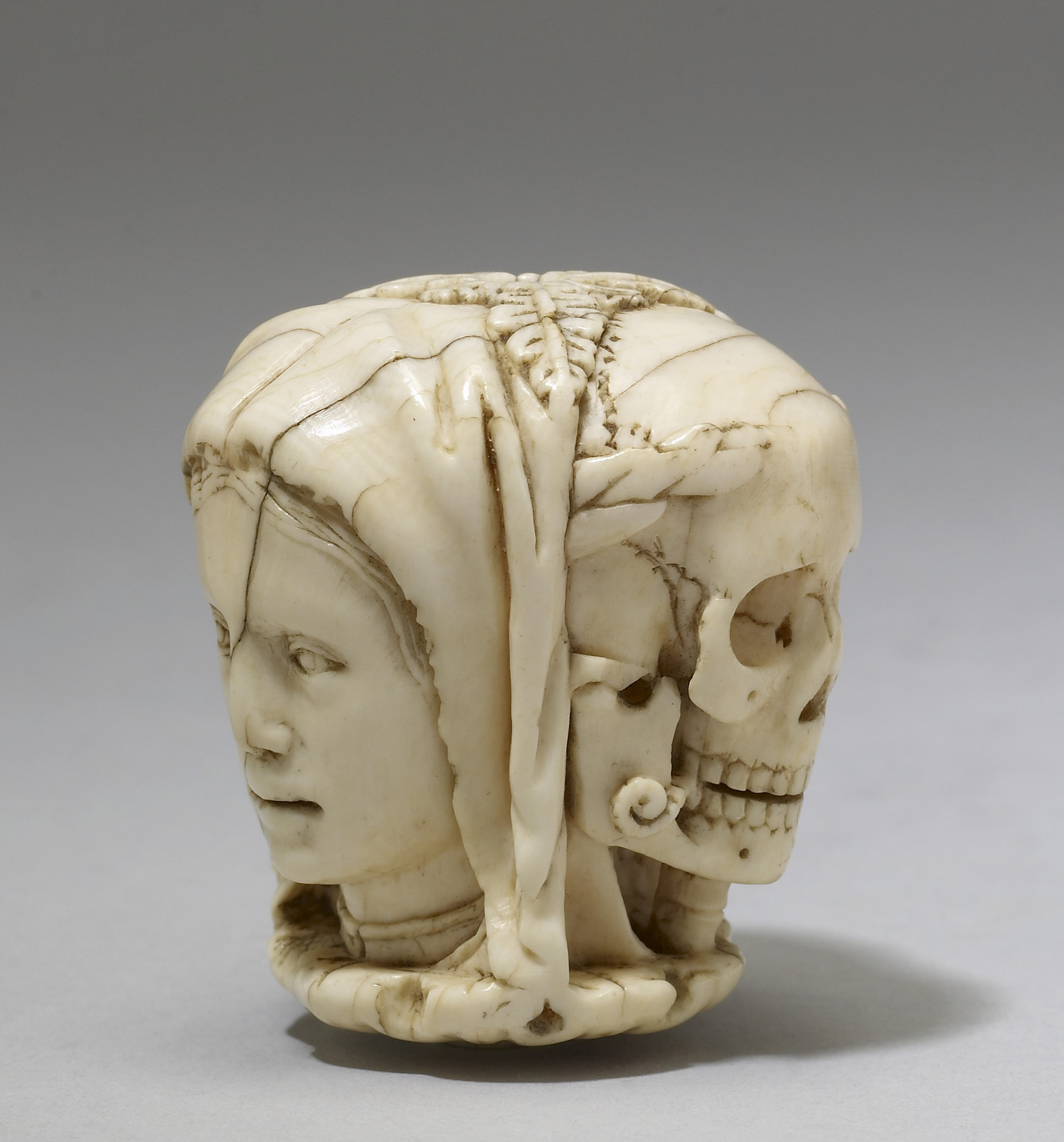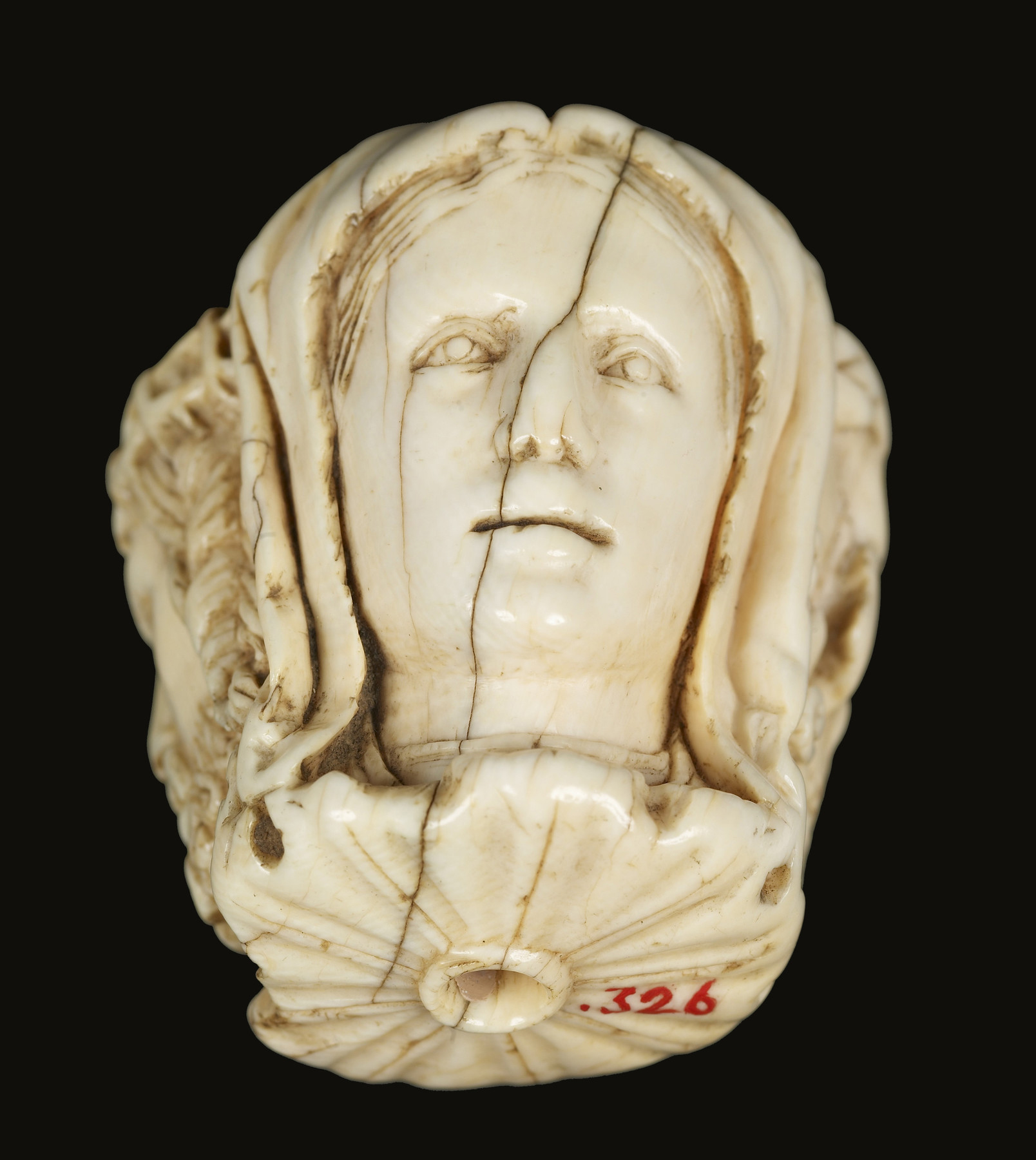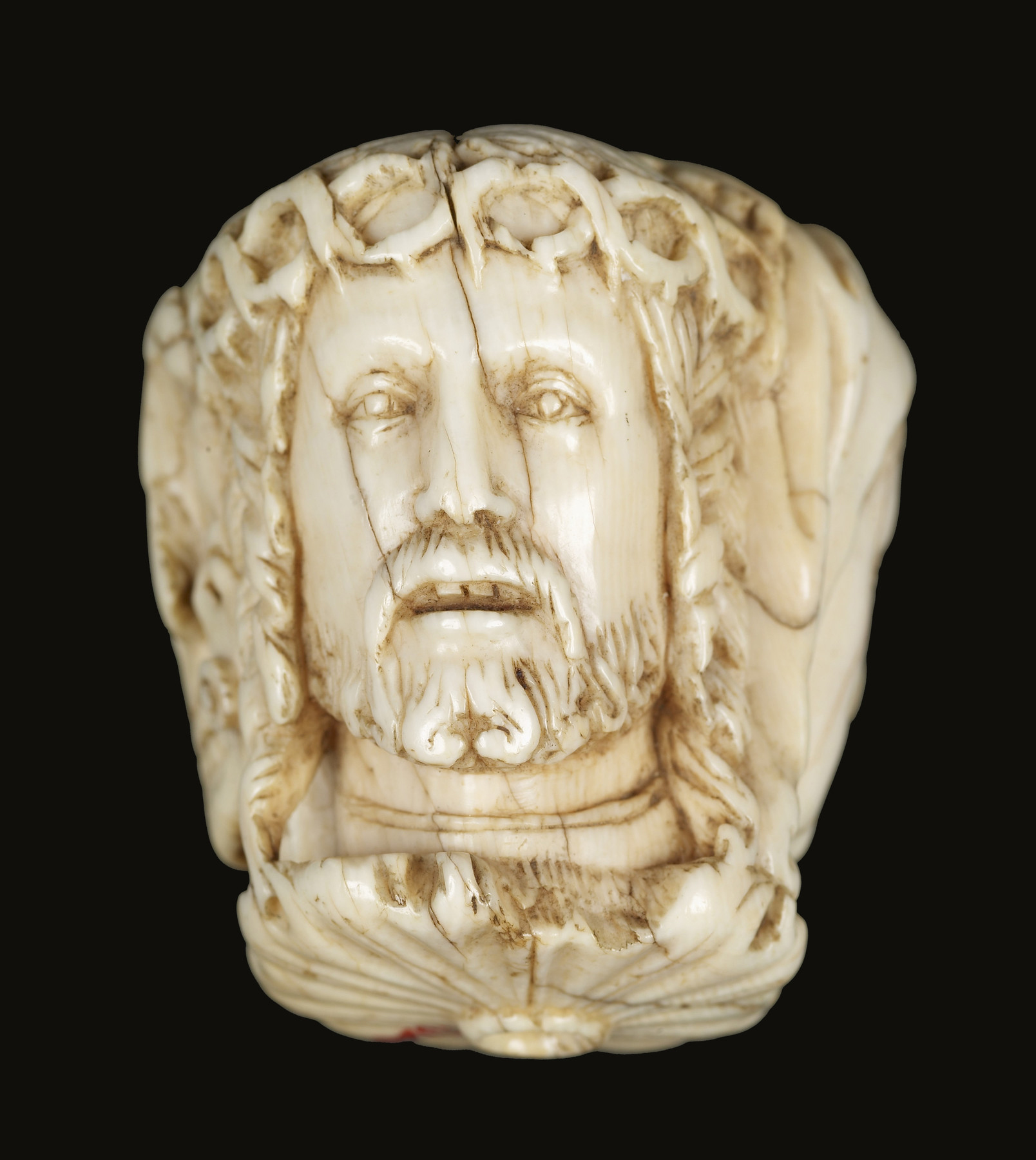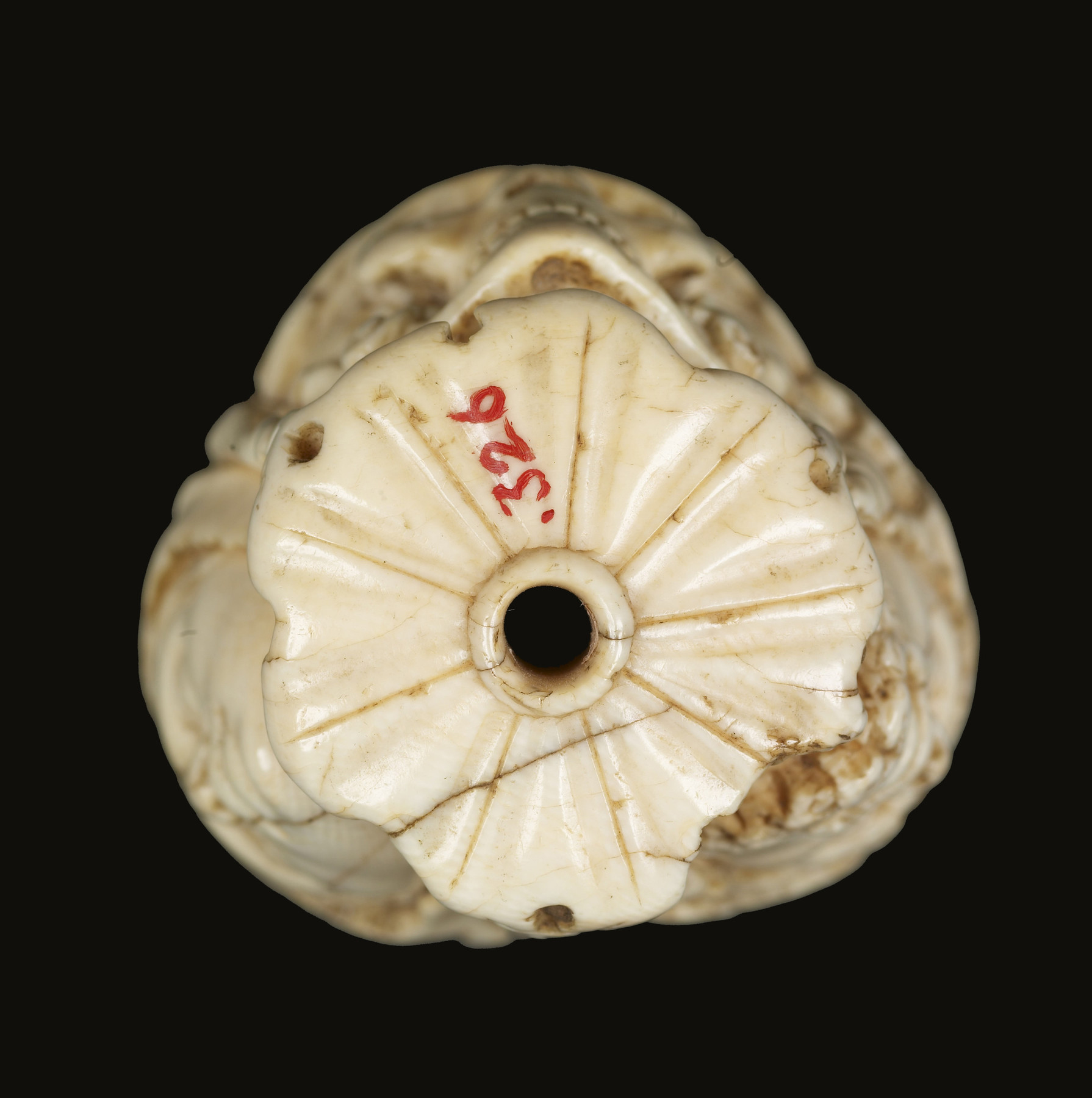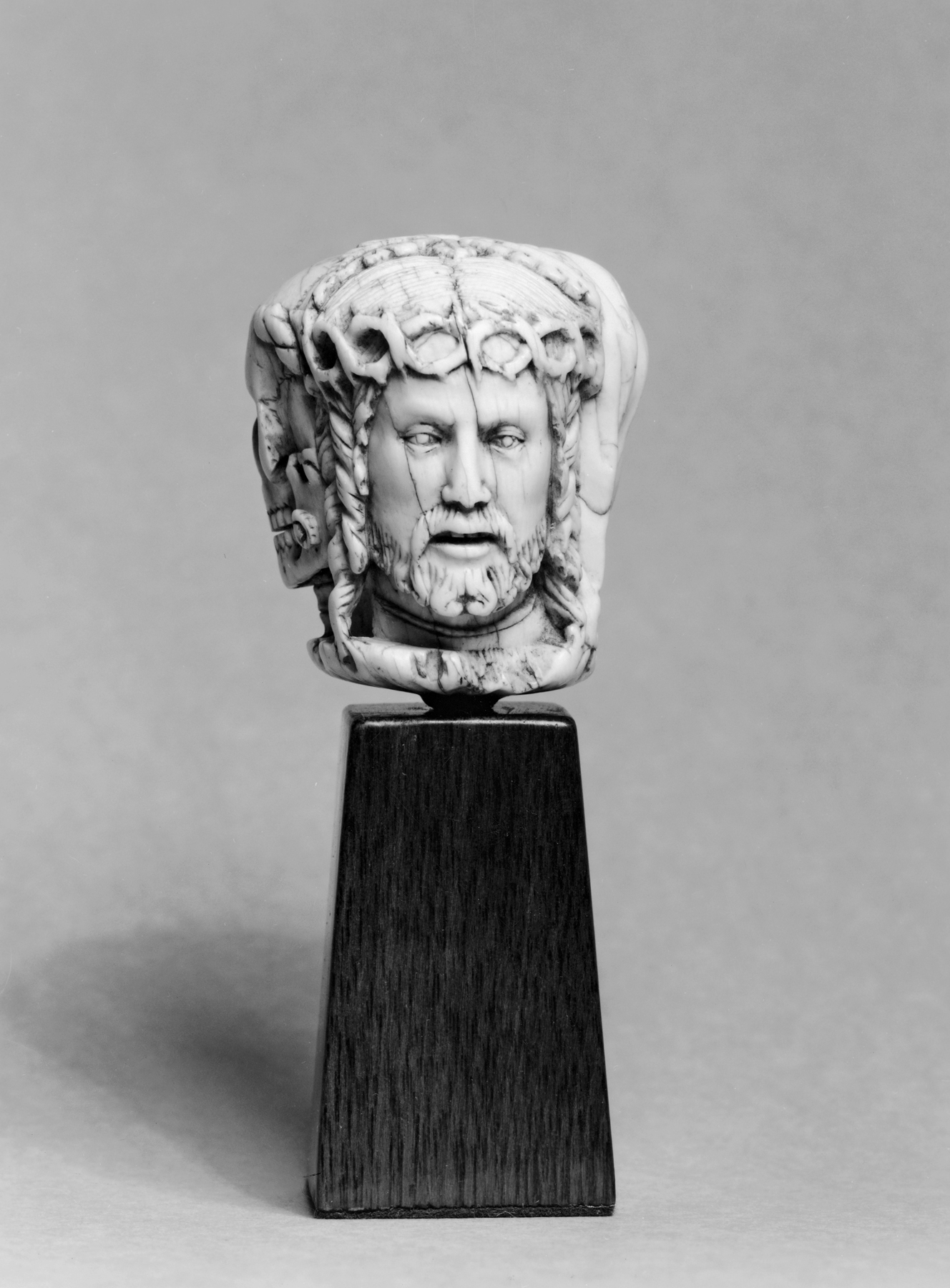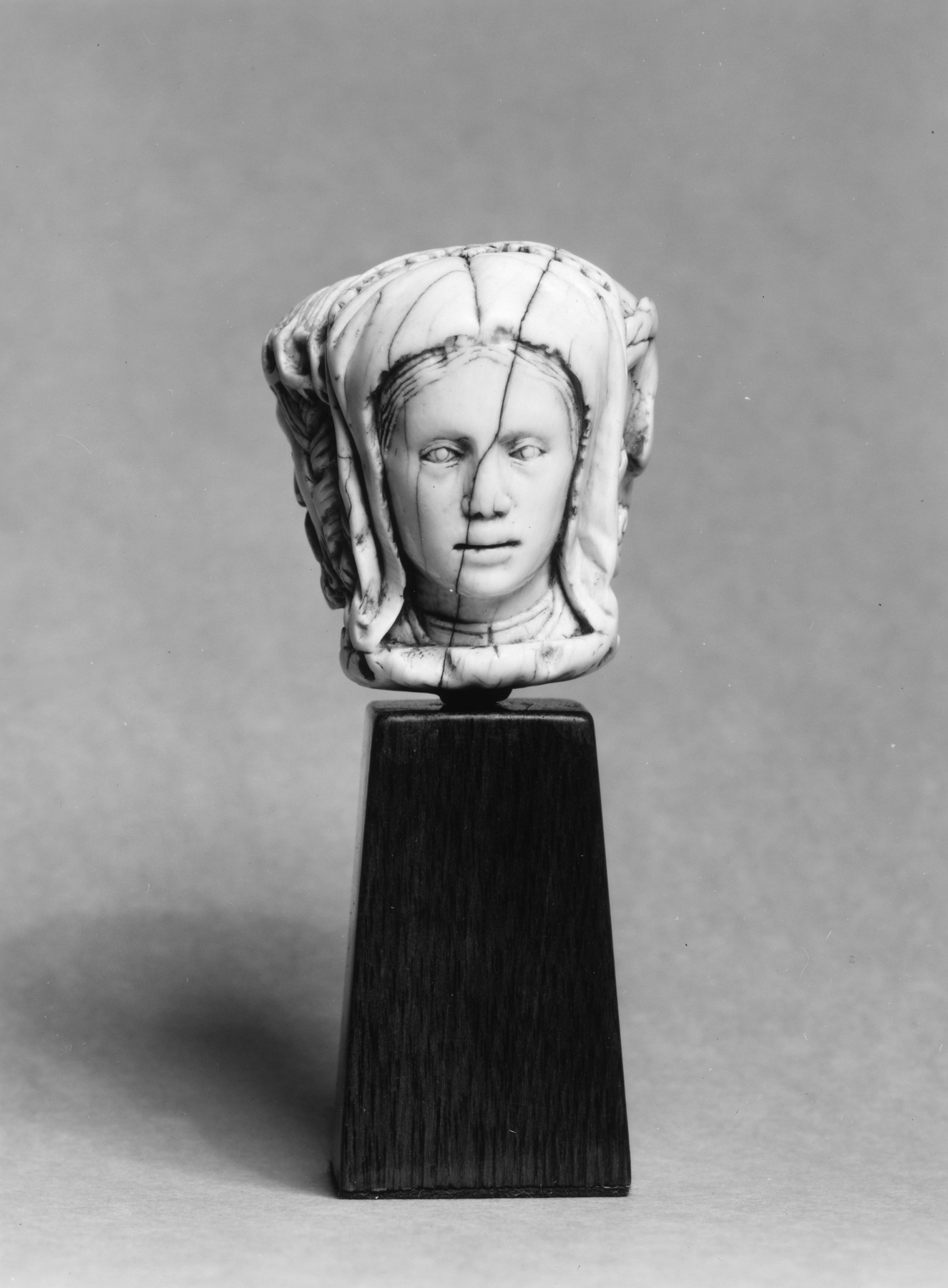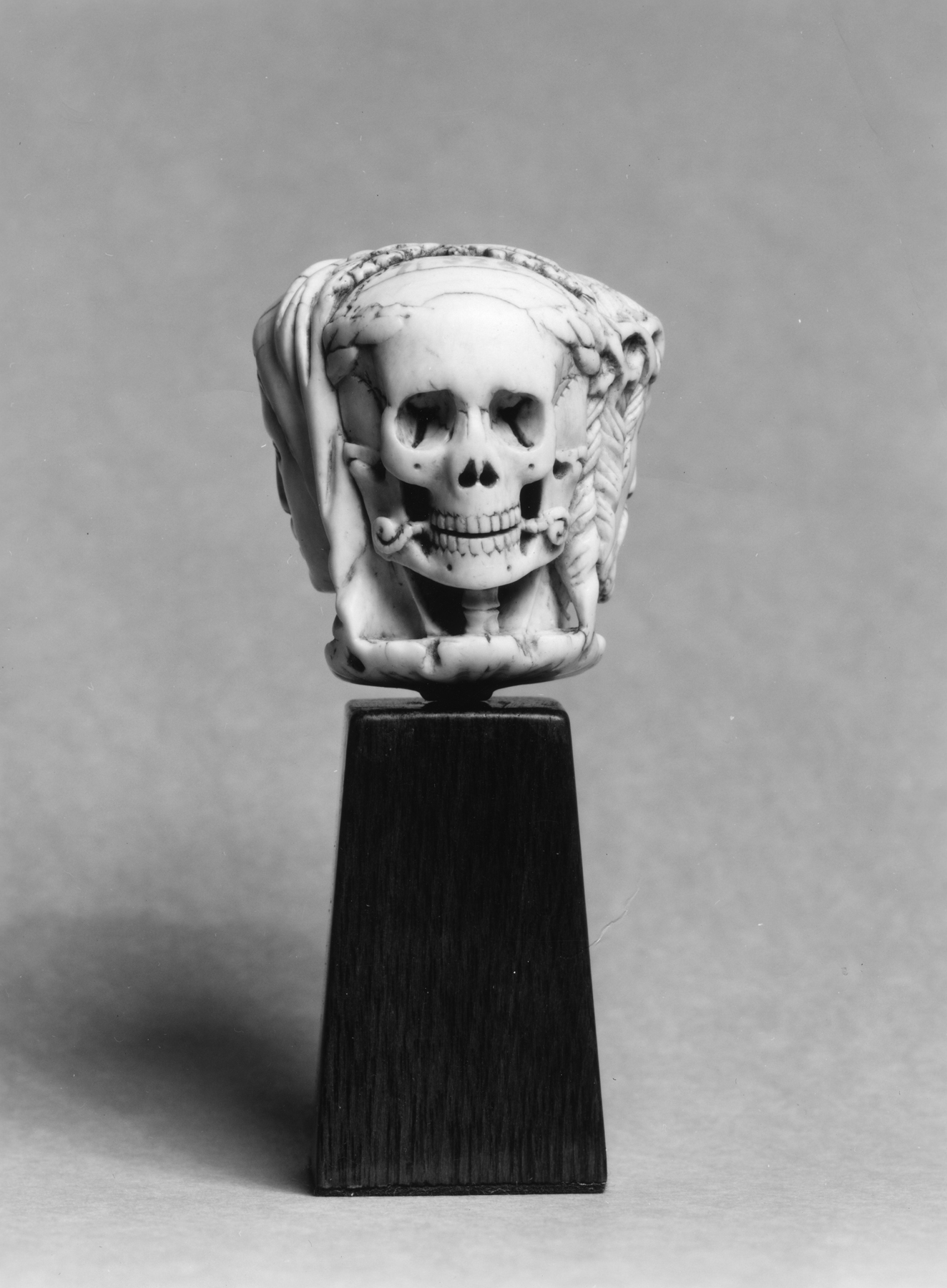Paternoster Bead from a Rosary or Chaplet with Christ, a Young Woman, and Death
(Renaissance Europe )
This pendant combines the heads of Christ, a young woman, and skull from which worms crawl, symbolizing Death. The carver's attention to lifelike detail extends to the minute row of teeth revealed by Christ's parted lips. the ivory is worn from the frequent stroking as the bead ran through the fingers of the Catholic user saying a prayer to Our Father (Paternoster).
Provenance
Provenance (from the French provenir, 'to come from/forth') is the chronology of the ownership, custody, or location of a historical object.
Henry Walters, Baltimore [date and mode of acquisition unknown]; Walters Art Museum, 1931, by bequest.
Exhibitions
| 2017 | The Ivory Mirror: Death and Selfhood in Renaissance Art. Bowdoin College Museum of Art, Brunswick. |
| 2002 | A Renaissance Gem Revealed: Petrarch's Triumphs Disbound. The Walters Art Museum, Baltimore. |
| 1971-1972 | World of Wonder. The Walters Art Gallery, Baltimore. |
Conservation
| Date | Description | Narrative |
|---|---|---|
| 1/11/1962 | Treatment | cleaned |
| 11/19/1987 | Treatment | examined for condition; cleaned |
Geographies
Belgium
(Place of Origin)
France (Place of Origin)
Measurements
H: 2 × Diam: 1 13/16 in. (5.1 × 4.6 cm)
Credit Line
Acquired by Henry Walters
Location in Museum
Not on view
Accession Number
In libraries, galleries, museums, and archives, an accession number is a unique identifier assigned to each object in the collection.
In libraries, galleries, museums, and archives, an accession number is a unique identifier assigned to each object in the collection.
71.326

